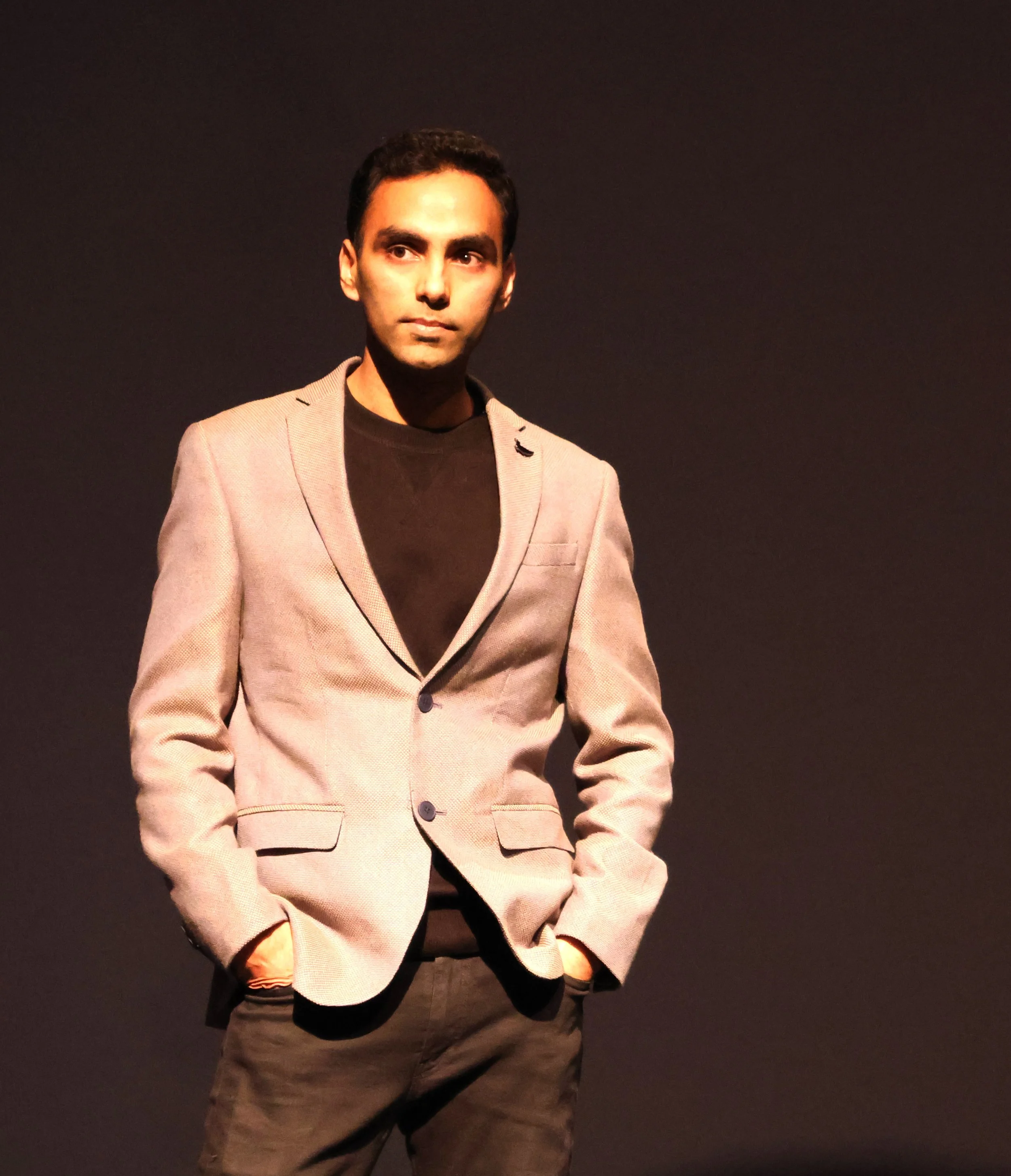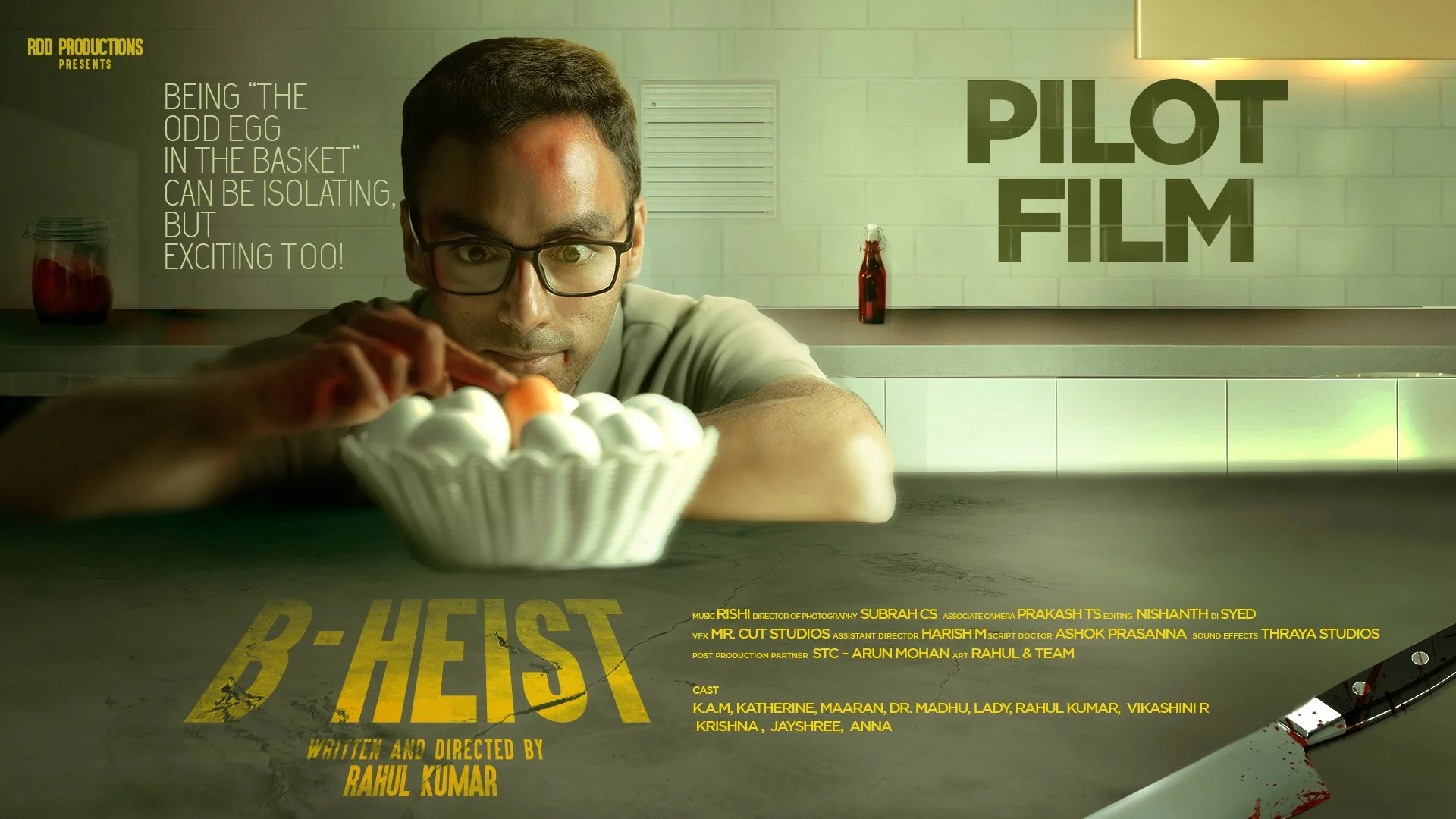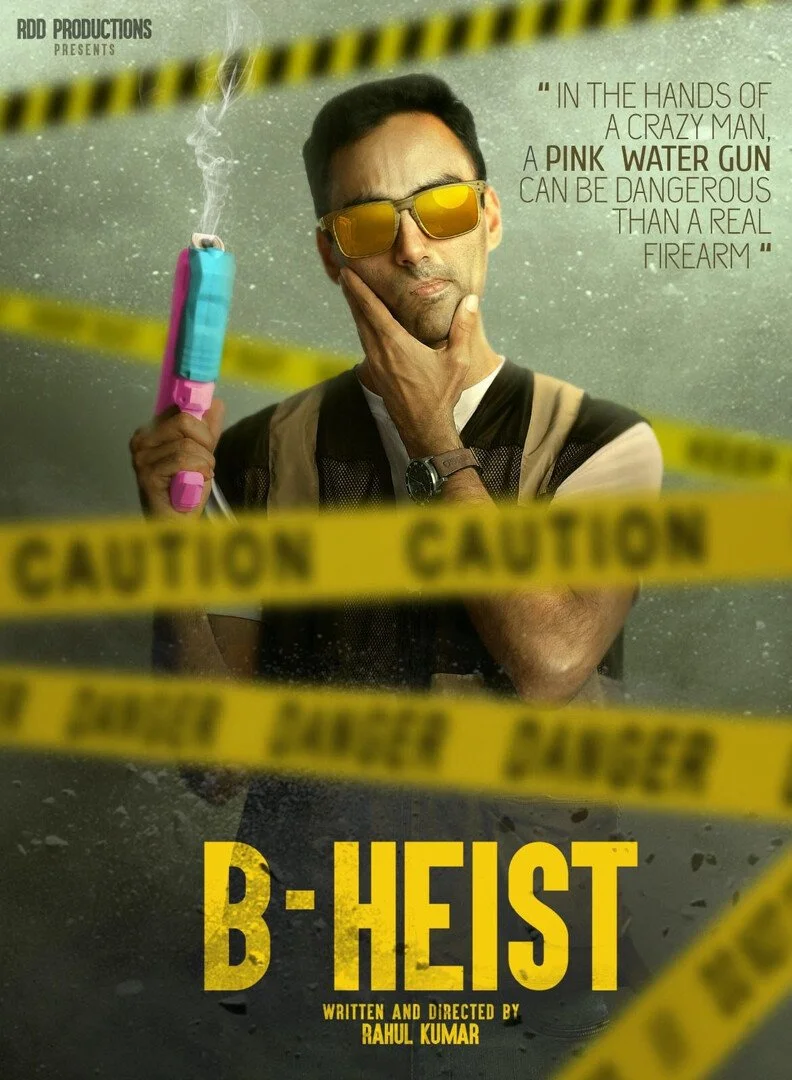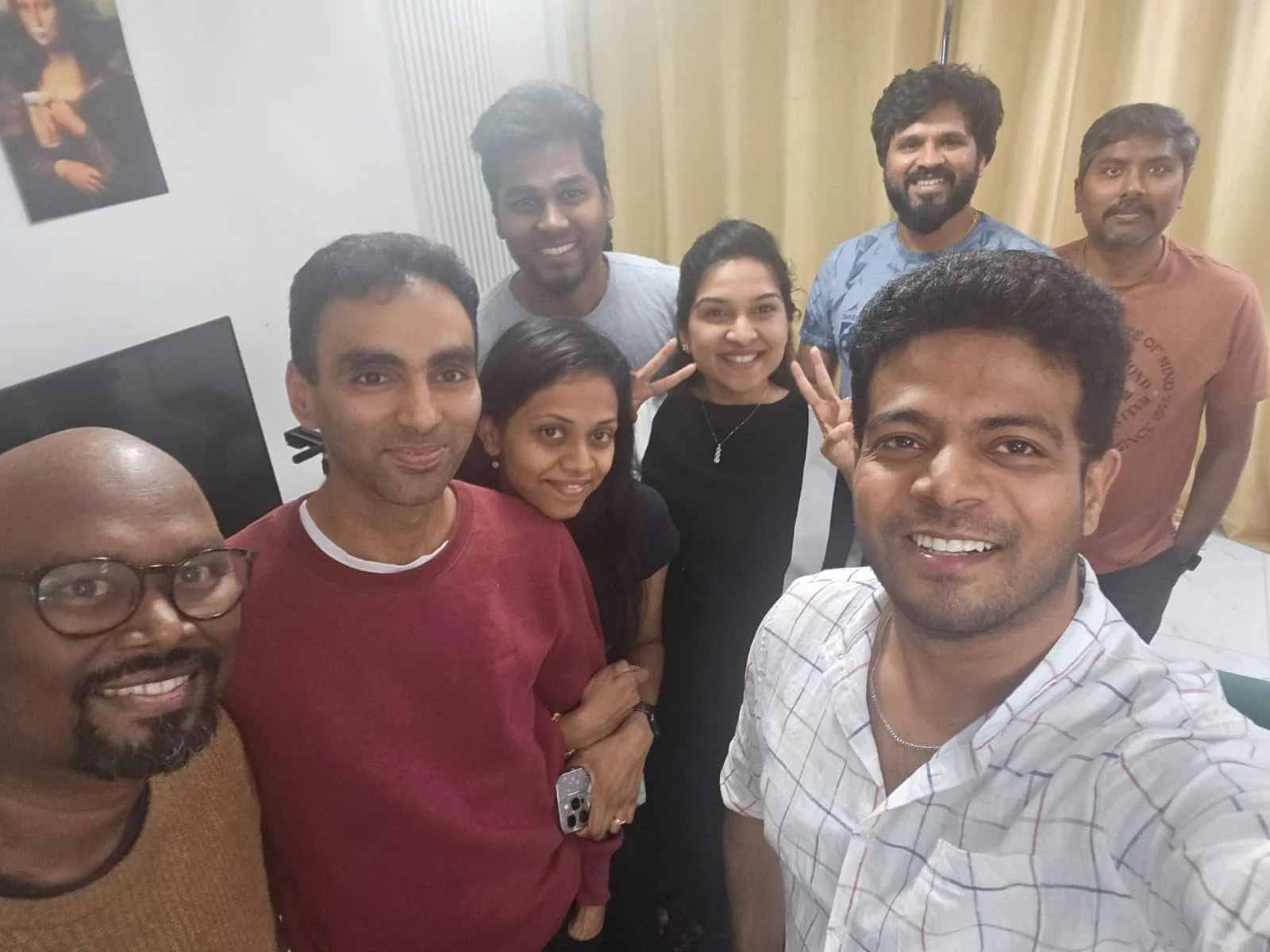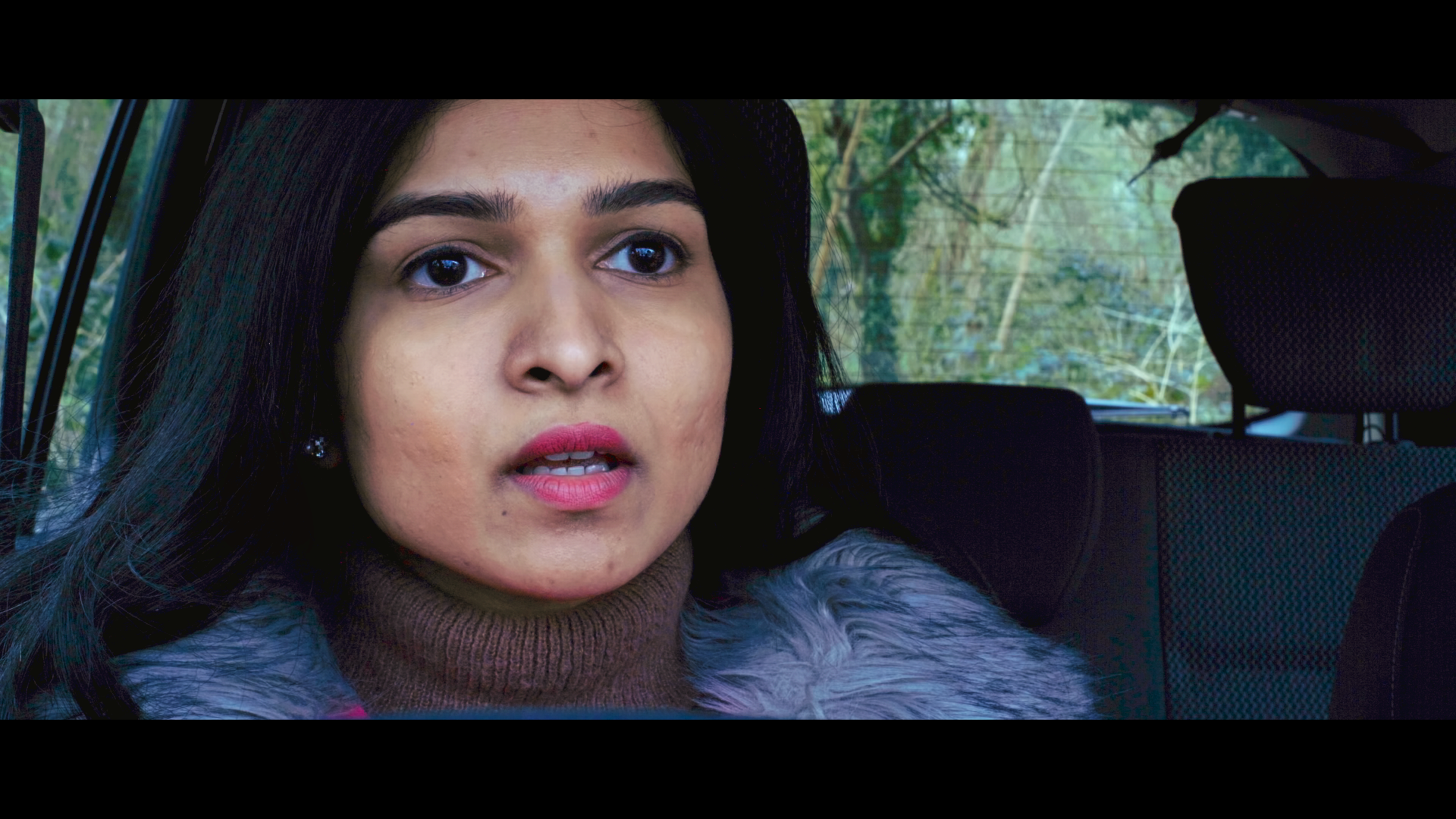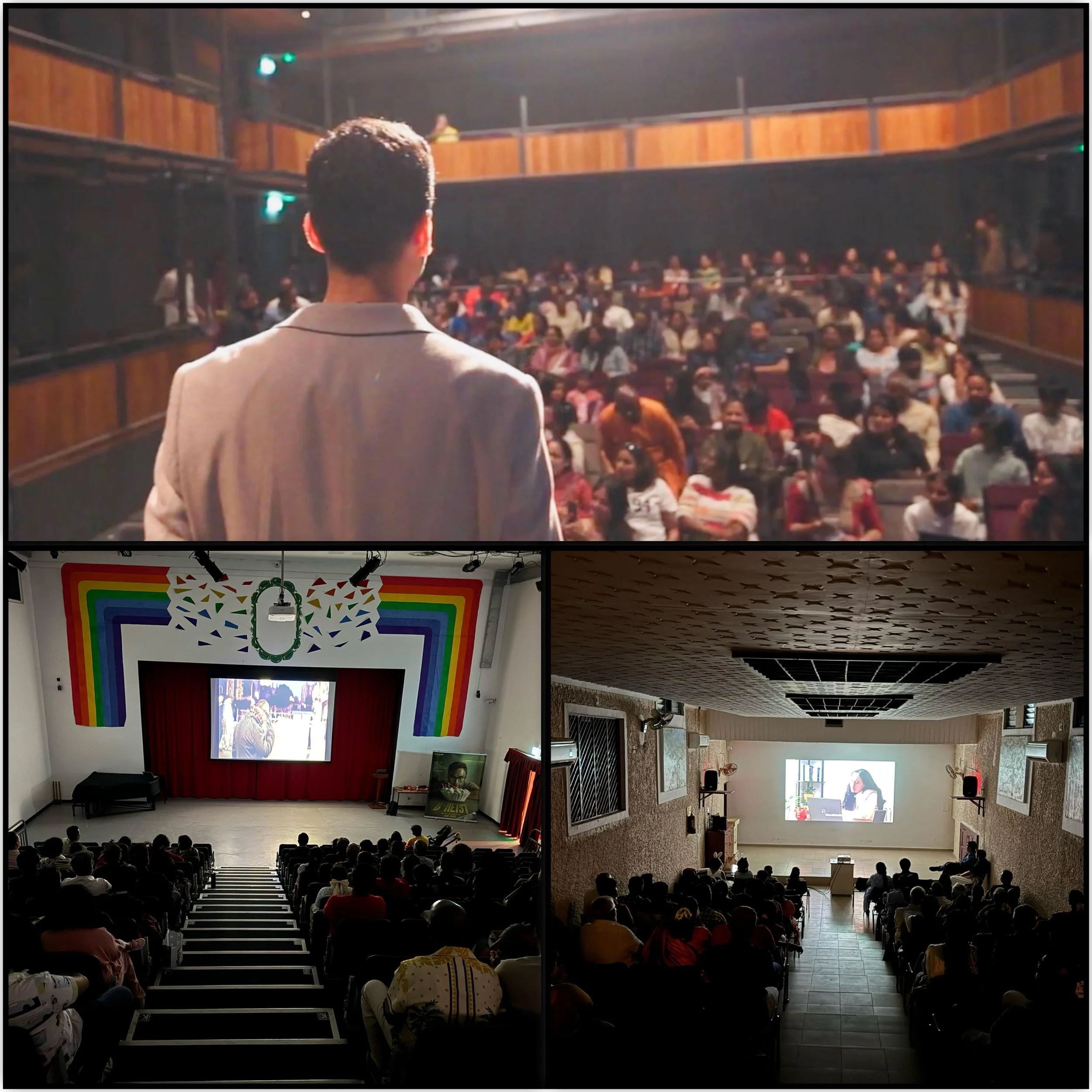Cracking the Code: Rahul Kumar on the Making of B-Heist
Welcome Rahul, we are very excited to have you today with us to discuss about your work.
Who is Rahul Kumar and how did the passion for creating begin?
I’m Rahul Kumar, an independent filmmaker based in London, originally from India. My love for storytelling began in childhood spent imagining stories / inventing characters. I still remember, during my 10th grade, I wrote a 45-page script in one go, not worrying who will read it or if it could be made at all, simply enjoying the process of creation.
I’m happiest while taking a story from scripts to screen: shaping words on the page, building a world in head, problem-solving on set, and finding rhythms in the edit / music etc,. I love to stay hands-on across scripting, pre-production, production, post, release, and digital marketing. I also love acting; stepping in front of the camera helps my directing instincts. For this pilot, I served as producer as well, keeping quality high and the team aligned.
I also believe films are emotion engines, they make us think, laugh, cry, and think better. That’s how my passion began, and that’s why I started to create.
Can you tell us a bit about your previous work?
Though I made few rough short films at university, this is my first profesional pilot and I wanted no compromise on quality on or off set. This film went through proper film making process like any other bigger films : professional poster designs, multiple script / screenplay drafts, storyboards, shot lists, recce, detailed camera/ lighting, strict disciplined shoot timings and plan B for usual unpredictable english weather.
Post Production was equally rigorous; drafts to final cut, foley, background score, Color in DaVinci, DCP and Pro-res delivery. It was a big step for me with no prior experience, but I enjoyed the challenge. I was very fortunate to have a dedicated team : Artists, DOP, technical team who supported me throughout this journey and helped me translate my story to screen.
The premise balances high-stakes suspense with very human vulnerabilities. Was this always the plan, or did the personal side of K.A.M evolve during writing?
The inception of story started with emotional vulnerabilities and light hearted conflicts between the main characters K.A.M and Katherine which lead to main plot of ‘B-Heist’. K.A.M’s emotional cracks and his playful games with Katherine were the spark; the high-stakes story came later. The suspense elements grew naturally around them to keep the audiences hooked. While K.A.M arc is film’s compass, Katherine is the backbone, her perspective forms the narrative and mirrors the audience’s questions and doubts.
Choosing Buckingham Palace and Windsor Castle was more than just scenic; their grandeur, history, and security shaped the tension, and the movie scale.
In short, the vulnerability came first, the stakes evolved to serve it, and “B-Heist” only clicked when both stories complemented each other.
CONVERSATION ABOUT: '‘B-Heist''
Beneath the thrills, B-Heist feels like a study in restlessness — both mental and societal. What bigger themes did you want audiences to walk away with?
Absolutely, ‘B-Heist’ is about restless minds inside a restless world. I wanted audiences to feel the constant noise beneath NORMAL behaviour, and show how K.A.M ‘s quick, impulsive actions can be both isolated and unexpectedly free. The quote from the poster “Being the odd egg in the basket can be isolating, but exciting too” captures that
If viewers leave thinking, “How do we treat the odd egg at work, at home, in public? Do we make space for them, or only for their usefulness?” that’s the bigger theme and bigger win. Given the short format and real constraints of time and budget, I kept the mental and societal threads light-touch. If B-Heist grows into a feature, those themes will move to the front, deeper look into K.A.M’s coping, the systems around him, and how acceptance can be built.
How does the film explore the fine line between genius and recklessness? The story flirts with questions of morality — especially around personal fulfilment versus societal responsibility. Was this deliberate from the start ?
Yes, this was deliberate from the start; genius and recklessness are a great combination for dark humour. Would it not be interesting for audiences to see a heist cover using a crepe bandage and a Halloween mask? Or to watch a car registration number manipulated with a simple marker? These are quirky yet clever ideas we explored to keep audiences intrigued and hooked.
The story flirts with morality, but for people like K.A.M., personal fulfilment often comes first not deliberately, but because of the condition and the adrenaline rush they can’t control. The overall objective of this pilot was to entertain the audience as much as possible.
Were there any scenes where you had to pull back because the “crazy” ideas were too unbelievable — or did you lean into them fully?
There were a few ideas on paper that didn’t make it to the screen because they felt a bit too much. In one instance, the birthday candles on K.A.M.’s cake were actually mini rockets that would fly up to six metres and explode with sparkles, as the candles were coated with sodium metal and alcohol. On paper it was hilarious, It didn’t make it to the screen because it was too dangerous to perform without appropriate safety measures. So yes, There were quite a few crazy things on paper that didn’t make it to the screen.
Were there any Easter eggs or chemistry-related jokes snuck into the background for eagle-eyed viewers? What’s one behind-the-scenes story from shooting B-Heist that perfectly sums up the film’s tone?
About 70% of the story happens at night and so did our shoot. Most of the cast and crew had day jobs, so we filmed on weekend nights, with people traveling in after long weeks. Yet the set never felt tired. We were rigging lights, running lines, debating mainstream films, cracking instant in-jokes, and swapping life stories. Like K.A.M, we carried the tough stuff inside, but on the surface it was all excitement and joy. Challenging, yes, but enjoyable and deeply satisfying. It’s exactly the kind of experience we will happily repeat.
Private screenings in three cities is a big win for a short film. How did you make it happen—partners, outreach, budgeting—and what was the marketing strategy for filling seats and turning those events into momentum?
After the final output lock, I thought it deserved a big screen. I also wanted to test a go-to-market strategy beyond YouTube or indie OTT- Private Screening runs. We cut a crisp trailer, designed flyers, reached out to family and friends, and boosted with social media campaigns (Instagram, Facebook, WhatsApp). I built a sponsor deck to secure partners, engaged local community supporters, negotiated with theatres, and coordinated volunteers to handle RSVPs and post-screening Q&As/panel discussions.
For a short, pulling off three private screenings (two in London, one in India) with 500+ attendees was both huge and strategic. It generated word of mouth, proof of demand, and relationships we can carry forward. Most importantly, it taught me the release-and-business side budgeting, venue deals, sponsorships, and audience conversion, that I will apply to future projects.
In future projects, do you plan to explore similar genre intersections, or are there other genres you're eager to explore ?
I am already developing B-Heist from a pilot into a feature. I love blending genres dark humour with heist and suspense, and I will keep exploring those intersections.
Thriller is the genre that most intrigues me now; I am actively writing a new script in that genre. I am also keen on mystery-drama and science fiction. I am open to new genre and mix ups, after all, imagination does not have borders; neither should the stories we tell.
Thank you so much, AIMAFF team, for the opportunity to share my journey and story.

